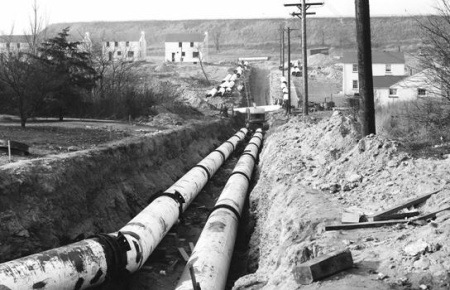A brief history of the Roxborough Water Works by Philadelphia Water Department historical consultant Adam Levine

Looking north on Granville Street toward Upper Roxborough Reservoir, 1948
By the end of the 1850s, it was already apparent to Henry P.M. Birkinbine, chief engineer of the Philadelphia Water Department, that the northwestern section of the city—including Roxborough, Manayunk, and Chestnut Hill—would need to be served by its own water works. The high ground in this area was far above the reach of existing reservoirs in the city, which supplied water by gravity to homes and businesses. Wells in populated areas were becoming unpalatable and in many cases unhealthy. A small private water works, built to serve Germantown and its vicinity, used a spring and dam of water along Papermill Run (now called Monoshone Creek), but Birkinbine predicted that its capacity would soon be outstripped by the rapidly growing population.
“Manayunk and Roxborough [contain] a population numbering about twelve thousand,” Birkinbine wrote in a report to City Councils in September 8, 1859. “Of these, at least three thousand are operatives employed in the different factories. This part of the city is much in need of a supply of water for culinary, manufacturing and sanitary purposes, and for protection against fire, as the property in the manufactories is of great value, and now almost entirely without protection against fire…. From the dense population of parts of the district, the wells have become so contaminated, that the water in but few of them is now fit for culinary purposes. The necessity of a supply for manufacturing and mechanical purposes, is evident.”